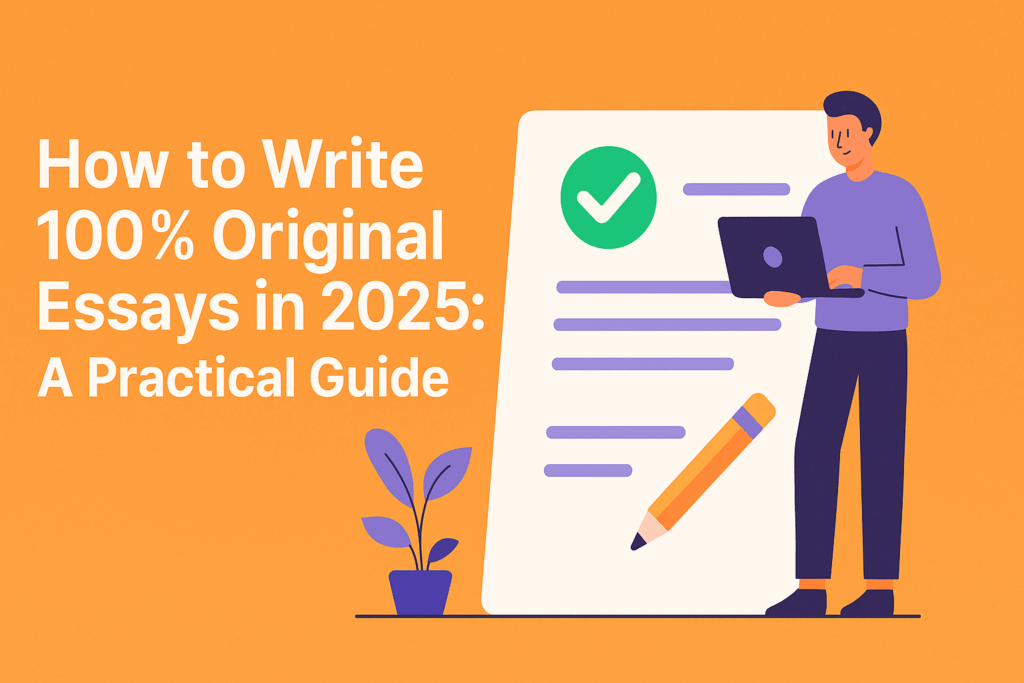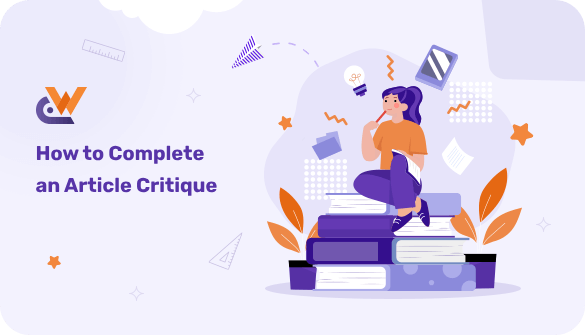How to Write 100% Original Essays in 2025: A Practical Guide
In today’s academic landscape, originality is no longer just encouraged — it’s demanded. As AI-generated content becomes more accessible, students face new challenges in proving the authenticity of their work.
Universities and colleges are doubling down on integrity policies, using advanced tools to detect both traditional plagiarism and AI-generated passages. Copying isn’t just risky — it’s obsolete. Real success lies in structured, original thinking.
“In 2025, even a single copied sentence can cost you your academic future.”

Understand What “100% Original” Really Means
Many students mistakenly assume that “100% original” means zero text similarity in any detection tool. But in reality, originality is about presenting your own ideas clearly, honestly, and thoughtfully — even if some similarities (like quotes or common phrases) appear. To write truly original content, it’s crucial to understand what counts as plagiarism and what doesn’t.
| Type | Description | Is it plagiarism? |
|---|---|---|
| Direct copy-paste | Verbatim copying without citation | ✅ Yes |
| Self-plagiarism | Reusing your own previous work without disclosure | ✅ Yes |
| Correct paraphrasing | Rewriting ideas in your own words with citation | ❌ No |
| Common knowledge | Widely known facts that don’t need citation | ❌ No |
Start with Proper Planning and Structure
The easiest way to avoid plagiarism is to plan your essay well from the start. When you structure your thoughts early on, you reduce the temptation to borrow phrasing or flow from other sources. A solid plan helps keep your writing both focused and original.
-
Write your thesis first
A clear thesis statement sets the unique direction of your essay and defines your personal take on the topic.
-
Draft a bullet-point outline
Building an outline ensures your arguments are logically ordered and organically developed — not borrowed from elsewhere.
-
Add references after the structure
Establish your voice and line of reasoning first, then strategically include quotes or citations to support your points.
Use Sources Correctly: Paraphrasing, Quoting, and Citing
Proper use of sources is one of the most important skills in academic writing. While tools like ChatGPT can help summarize or rephrase content, they can’t think critically or ensure ethical citation. Paraphrasing means rewriting ideas in your own words — not just swapping a few terms. Direct quotes should be clearly marked and cited. In 2025, the most commonly accepted citation styles are APA 7, MLA 9, and Chicago, so make sure you’re using the right one for your assignment.
- Use quotation marks for direct quotes
- Paraphrase and cite the source
- Use updated citation styles (APA 7, MLA 9)
💡 Pro Tip: When in doubt — cite it.
Avoid “Hidden” Forms of Plagiarism
Not all plagiarism is intentional. In fact, some of the most common mistakes happen when students think they’re doing things right. For instance, rephrasing content using AI tools without adding personal insight or analysis may still result in flagged content. It’s not enough to change a few words — true paraphrasing means fully understanding and rearticulating the idea in your own voice.
Another often-overlooked issue is self-plagiarism — reusing parts of your past assignments without proper disclosure. While the content may be technically “yours,” submitting it again violates the expectation of originality. Similarly, mimicking the structure, tone, or flow of a source without direct copying can still raise red flags. In today’s digital environment, even subtle patterns can be detected, so it’s important to be deliberate and transparent in how you build your work.
⚠️ Watch out for hidden plagiarism:
- Using ChatGPT text with only slight edits
- Repeating parts of your past papers
- Rephrasing source material without changing structure
Make the Content Truly Yours
One of the most powerful ways to ensure originality is to infuse your writing with your personal voice, experiences, and reflections. When you go beyond restating facts and engage critically with the topic, you move into a space that AI and other writers can’t replicate. Readers — and plagiarism detectors — can sense when a text is authentic.
Add personal insights
Don’t be afraid to bring your own experiences into the discussion. For example, instead of writing “Social media affects teen productivity,” consider something more specific like “When our group prepared for finals, half of us spent more time scrolling TikTok than revising.” These small touches demonstrate that you’re engaging directly with the subject and not just summarizing what others have said.
Balance facts and opinion
Academic writing doesn’t mean stripping out your personality. You can — and should — present facts, but the interpretation is where originality shines. Share your perspective on the data or theory. Say what surprised you, what you disagree with, or how it relates to your field of study. This kind of engagement not only enriches your work but also makes it unmistakably yours.
Use AI Wisely, Not Blindly
AI tools can be incredibly helpful in the writing process — but only if used thoughtfully. They’re designed to assist you, not replace your critical thinking or original voice. Relying on them too heavily can lead to generic or even plagiarized work, especially when students submit unedited AI-generated paragraphs. It’s important to know where the line is between support and substitution.
Below is a simple comparison of how AI can be used productively — and how it can lead to trouble if abused:
| ✅ Good AI Use | ❌ Risky AI Use |
|---|---|
| Outlining ideas | Submitting raw output |
| Grammar correction | Generating citations blindly |
| Brainstorming topics | Rewriting entire papers |
Just because something was written by an AI doesn’t mean you’re not responsible for it. Instructors and academic institutions increasingly treat unedited AI-generated content as a form of dishonesty — especially if no effort was made to personalize or verify the material. If you do use AI, make sure the final draft reflects your thinking, your structure, and your judgment.
✅ Final Check Before Submission
You’ve written your essay, included your citations, and even added your personal insights — but before you hit “Submit,” there’s one last step. No matter how carefully you write, there’s always a chance that certain phrases may resemble existing texts or raise red flags in a plagiarism scan. That’s why a final check is essential, especially with tools now also detecting AI-generated patterns.
Before submitting, make sure to scan your text for plagiarism and AI traces using a reliable plagiarism checker by PlagiarismSearch.com.
- ✅ I wrote all parts myself
- ✅ I cited everything I borrowed
- ✅ I ran a plagiarism + AI check
- ✅ I reviewed flagged matches
Conclusion: Your Originality Is Your Signature
At the end of the day, your essay reflects more than just your writing ability — it’s a testament to your thinking, ethics, and individuality. While shortcuts may seem tempting, original work is what earns lasting respect from instructors, peers, and future employers. In a time when AI-generated content floods the internet, having a voice of your own is a true advantage.
In a world full of copies, be the voice.



